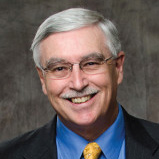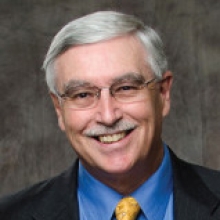Getting Beyond the Rhetoric: Findings from the ETL Survey on Curricular Initiatives
In the wake of the recent economic downturn and its aftermath, law schools and legal education are again the focus of intense scrutiny. Unfortunately, there is often more rhetoric than constructive discussion. A key prerequisite for fostering any kind of critical and creative thinking and activity is having a reasonably accurate understanding of what is happening in legal education. While some empirical evidence exists (the ABA and AALS have conducted surveys of law schools in recent years), it seldom finds its way into the discussion. One major consequence of the rhetoric overload is the implicit – if not explicit – assumption that little or nothing promising is or has been happening in the world of legal education. Or more bluntly, damn the lot of them!
The empirical evidence shows differently. And it shows that innovation is not the exclusive province of any particular class of school. A range of law schools have instituted a variety of innovations. The particulars are geared to the markets within which their graduates are likely to work. We can look at the efforts of schools who been rethinking what they do and how they do it as a series of experiments that may offer insights for a constructive discussion of legal education moving forward. Because all law schools are not the same this means, of course, that there are likely to be a variety of useful models. It is not a literal matter of one size fits all. We are under no illusions that all is well in legal education or that all law schools are pursuing groundbreaking initiatives in their educational. We do, however, believe there is much to be learned by leaving the rhetoric behind and looking at what is actually happening on the ground.
In previous posts we described our recent law school survey. It was designed to elicit information on the variety of things law schools may be doing in an array of areas. Chief among them is curriculum, and every responding law school reported some kind of new initiative in this area.* Not all, however, pursued the same initiatives. We asked about 11 different kinds of initiatives, and the chart below shows the seven for which at least one-half of the responding schools reported activity (the other four are: initiatives involving individual first year classes – 48%; addition of new certificate programs – 47%; revision of existing clinics – 39%; and revision of existing certificate programs – 22%).
What may be driving these changes? Two obvious – but quite different – possibilities are the economic downturn and its effects on the legal marketplace, and a school's rank. To address the first possibility, we asked about changes started since 2001 (the survey was fielded in the spring of 2011) in each of the 11 curricular areas -- and we asked the year of the start. A full 75% of curricular reform efforts started before calendar year 2009, and 88% started before calendar year 2010. In short, we cannot say that activity with regard to curriculum is simply a response to the effects of the economic downturn and the concomitant attack on legal education.
The second possibility is that whatever is happening with regard to curricular matters, it is the elite – or at least the higher ranked – schools that are innovating with the rest languishing. To assess this possibility, we looked at the connection between a new initiative in each of the 11 curricular areas and the responding school's tier (using four tiers based on the most recent U.S. News rankings). Only one statistically significant difference emerged -- a relatively weak relationship between tier and changes in the second year curriculum such that lower tier schools are more likely to have initiatives in this area.
Looking at all eleven curricular areas, we can safely say that changes in these areas are not the exclusive province of either higher or lower ranked schools. This means that we should look across the spectrum of law schools to get a good sense of what is happening on the ground and to look for experiments to explore. Otherwise we will have an incomplete picture, with potential opportunities for positive innovation lost. To illustrate this idea we would like to highlight a few different examples drawn from the respondents to our survey – Stanford, Baylor, and St. Thomas in Minnesota.
Stanford Law School, in a February 13 press release, “announced the completion of the first phase of comprehensive reforms to its legal curriculum that began in November 2006 —successfully transforming its traditional law degree into a multi-dimensional JD, which combines the study of other disciplines with team-oriented, problem-solving techniques together with expanded clinical training that enables students to represent clients and litigate cases while in law school.” The program's emphasis is on the second and third years and emphasizes the broadening of students' training beyond just the courses offered by the law school to those in other schools and departments in the university, especially those with an international dimension. This is geared to the kinds of jobs Stanford's graduates are likely to enter.
Very different, though no less interesting, is Baylor Law School's Practice Court Program. Known for its emphasis on advocacy, Baylor Law School's curriculum has for many years integrated practical skills, professionalism, and substantive law within that emphasis. In the third year all students are required to take Practice Court. It is
a series of four classes taught over two quarters and required for all students. During this six-month program, students learn the fundamentals of evidence and procedural law. These classes require students to draw upon all of their experiences in the first and second years of curriculum… So while Practice Court's focus on the practical use of rules and courtroom procedure benefit those students planning to become trial lawyers, students learn lawyering skills crucial to all types of practice.
The initial exposure to advocacy, however, comes earlier. At the end of the first year, all students are required to participate in an intra-school moot court competition. Because most of its graduates practice in Texas, the entire curriculum gives a special place to Texas jurisprudence.
Since its opening in 2001, The University of St. Thomas School of Law has required all students to participate in its Mentor Externship Program, which was described for the survey:
Each year of law study, students are paired with a respected lawyer or judge in the community. Mentors introduce students to a range of legal tasks and activities such as depositions, client meetings or appellate arguments. Beyond introducing students to foundational lawyering responsibilities, mentors share the traditions, ideals and skills necessary for a successful law career. Mentors also help students understand professionalism in ways that traditional classroom lecture cannot capture … Upper level students participate in a classroom component designed to integrate students' mentor experiences and better prepare students for the practice of law by introducing them to topics that include marketing, networking, leadership skills, understanding the economic realities of practice, work/life balance, time management skills and client service.
The program draws heavily from theories of experiential learning and among other purposes “it fosters the development of each student's moral compass.”
Of course, there is much more to these three very different schools' programs than such short excerpts can show. Still, they remind us that serious thought and experimentation in legal education has been going on for some time, and we should be examining these already-running experiments for what they can contribute to critical and creative thinking and activity moving forward.
* The other areas are: faculty development related to teaching and learning; faculty professional activity related to teaching and learning; assessment of student learning, experience, and performance; and assessment of the success of a law school's educational program. We chose these areas because one of our main interests is in exploring movement toward the kinds of reforms proposed by the 2007 Carnegie report Educating Lawyers: Preparation for the Profession of Law.


